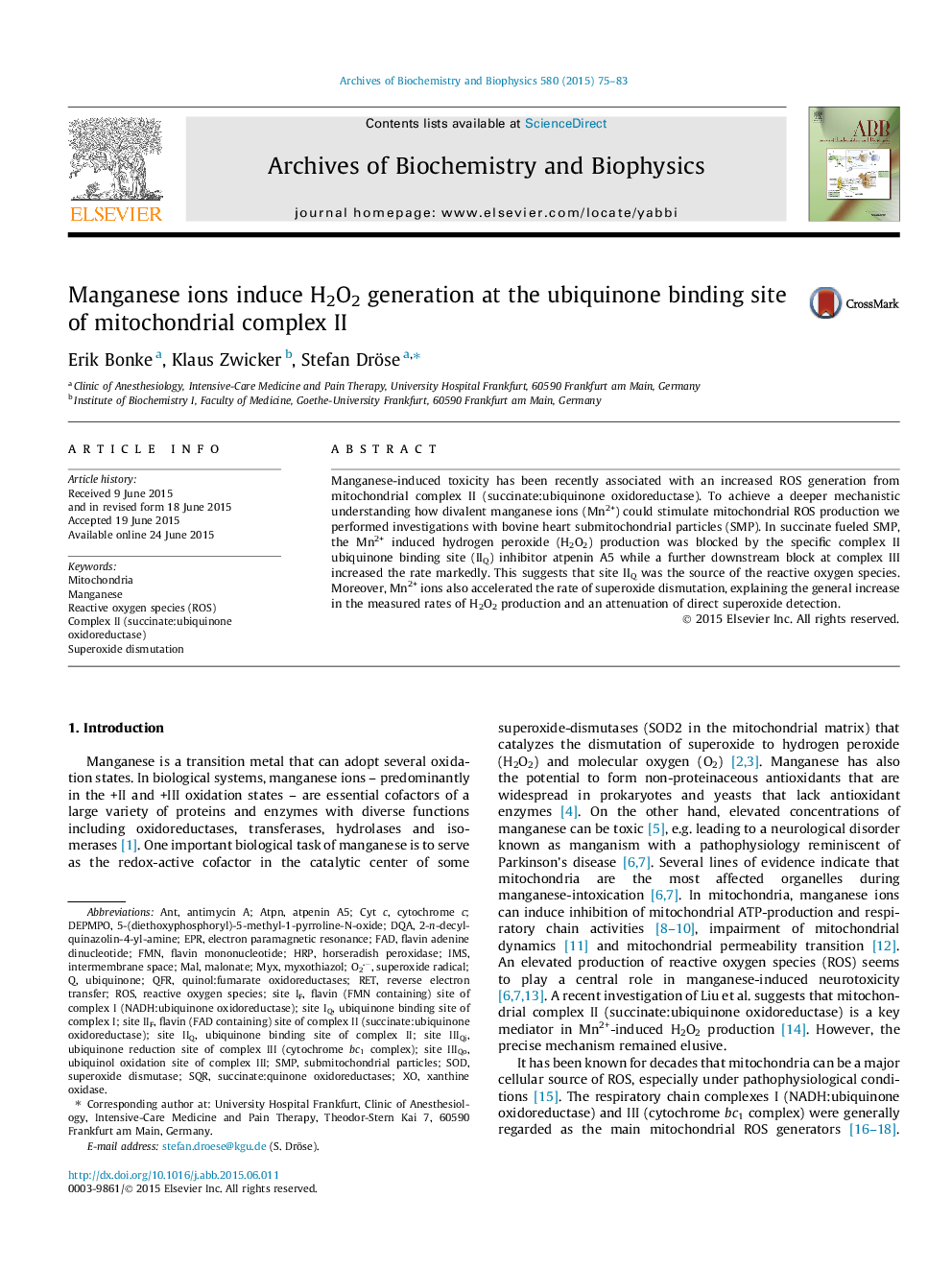| Article ID | Journal | Published Year | Pages | File Type |
|---|---|---|---|---|
| 8289636 | Archives of Biochemistry and Biophysics | 2015 | 9 Pages |
Abstract
Manganese-induced toxicity has been recently associated with an increased ROS generation from mitochondrial complex II (succinate:ubiquinone oxidoreductase). To achieve a deeper mechanistic understanding how divalent manganese ions (Mn2+) could stimulate mitochondrial ROS production we performed investigations with bovine heart submitochondrial particles (SMP). In succinate fueled SMP, the Mn2+ induced hydrogen peroxide (H2O2) production was blocked by the specific complex II ubiquinone binding site (IIQ) inhibitor atpenin A5 while a further downstream block at complex III increased the rate markedly. This suggests that site IIQ was the source of the reactive oxygen species. Moreover, Mn2+ ions also accelerated the rate of superoxide dismutation, explaining the general increase in the measured rates of H2O2 production and an attenuation of direct superoxide detection.
Keywords
ANTSuperoxide dismutation2-n-decyl-quinazolin-4-yl-amineMYXDQA5-(Diethoxyphosphoryl)-5-methyl-1-pyrroline-N-oxideDEPMPOQFRSQRantimycin ACyt CMALHRPFMNflavin adenine dinucleotideubiquinoneIMSXanthine oxidaseO2−ROSreverse electron transferFADElectron paramagnetic resonanceEPRRETMalonateSMPSubmitochondrial particlessuperoxide radicalSODSuperoxide dismutasecytochrome cintermembrane spaceflavin mononucleotideManganeseMitochondriaMyxothiazolHorseradish peroxidaseReactive oxygen species (ROS)Reactive oxygen species
Related Topics
Life Sciences
Biochemistry, Genetics and Molecular Biology
Biochemistry
Authors
Erik Bonke, Klaus Zwicker, Stefan Dröse,
